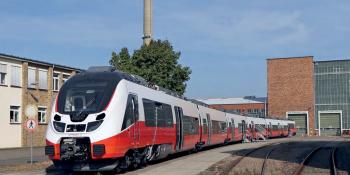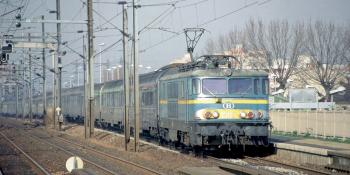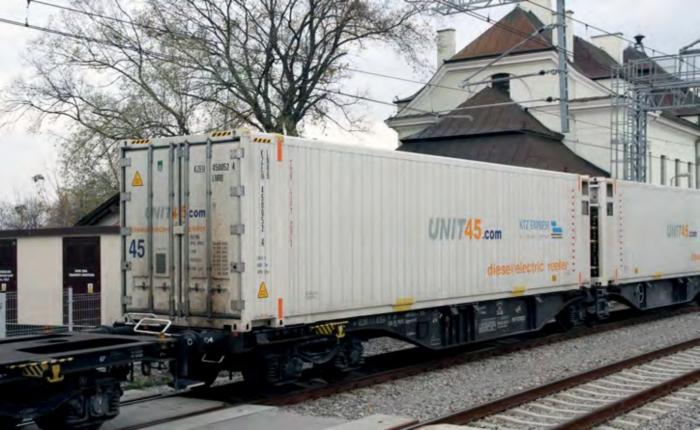

EUROPE
INTERCONTINENTAL FREIGHT BOOMING
In early January DB Cargo announced the operation of the first freight service from China to the UK. The train, carrying containers of clothing and other consumer goods, left Yiwu Xi in China’s eastern Zhejiang province on 1 January and was due to reach Barking on 18 January.
The service was organised by Chinese firm Yiwu Timex Industrial Investment, which already operates services from China to Duisburg, Germany and Madrid, Spain. The train travelled via Russia and then Belarus before crossing into Poland at Terespol. Due to the change of gauge at the Kazakh border, leaving China and again arriving in Poland from Belarus, the containers had to be transhipped to different wagons. In Poland this was done at the Malaszewicze terminal just west of Terespol; from here the train was routed via Poznan, Aachen and Lille to the Channel Tunnel.
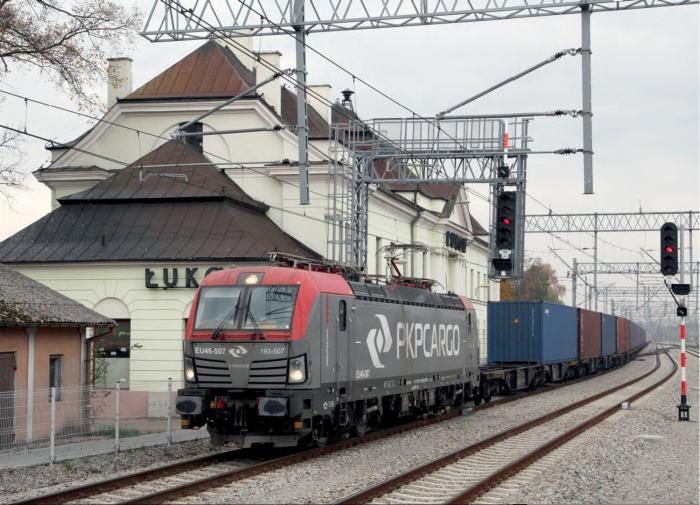
Containerised freight trains connecting China with Germany in particular have been operating for several years, and other long distance flows include China to Spain. The first test trains between China and Germany operated in 2008, and regular block trains carrying components from German BMW factories in Leipzig and Regensburg to the BMW factory in Shenyang, China have operated since 2010.
Rail freight appears to have found a significant niche between faster but much more expensive airfreight and slower but often cheaper maritime freight. DB announced in late December that it had moved 40,000 containers between China and Germany during 2016, an increase of 5,000 compared to 2015. The operator is forecasting the amount will increase to 100,000 a year by 2020; a wide variety of goods is now transported.
In a further development, DB is co-operating with Russian and Chinese railways to look at parcel and mail services. The growth of online retailing means there are greater parcel volumes, whilst high value but potentially hazardous goods such as lithium-ion batteries cannot be shipped using airfreight; a pilot train between Duisburg and Chongqing, China is planned in early 2017.
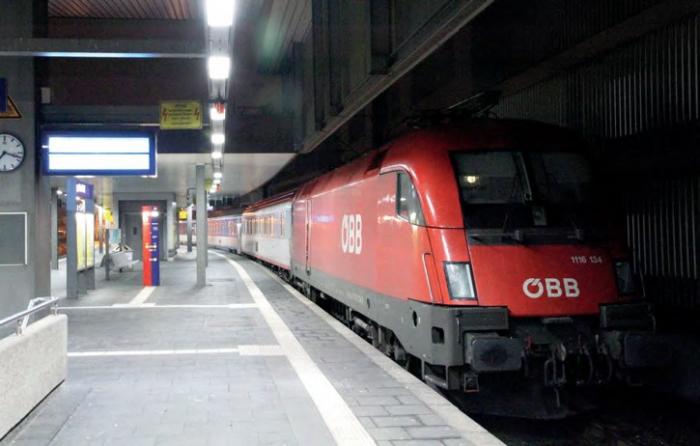
Two main routes are currently in use for Europe to China freight, both 10,000 to 12,000km long, taking 12 to 16 days on average. The northern one uses most of the Trans-Siberian route east from Moscow before entering China in eastern Siberia or via Mongolia and serving several northern Chinese cities; the southern one leaves the Trans-Siberian route at Yekaterinburg and heads south via Astana in Kazakhstan and mainly serves Wuhan in central China. A third southern ‘Silk Road’ route that avoids Russia altogether is under development with significant Chinese investment as part of its ‘One Belt – One Road’ policy – this would pass through several Central Asian states then Turkey and enter the EU via Bulgaria.
PASSENGERS TOO?
Whilst freight traffic might be getting all the media attention at the moment, the Chinese at least are thinking bigger. At InnoTrans in September 2016, Chinese rail manufacturing giant CRRC (now the world’s biggest rail manufacturer) featured a video presentation of its new design for ‘Intercontinental high speed trains’, shown in the video as operating Beijing to London services via Moscow and Berlin! The train was present in model form based on existing Chinese high speed EMUs, with space for passengers on the upper deck and express freight in containers on the lower deck.
MIGRANTS USING BRENNER AND SIMPLON ROUTES TO TRY TO REACH GERMANY
Following the wide-scale closure of EU borders to the large numbers of economic migrants crossing the Mediterranean to Italy during 2016, increasing numbers are now copying tactics first seen around the Channel Tunnel (or in Mexico), and are attempting to stow away on northbound freight trains leaving Italy for Germany or Austria. Media reports in Germany reveal that the German Federal Police in Munich registered 270 such cases in the last three months of 2016, mostly on trains routed via the Brenner Pass from Italy to Austria. Police and rail operators in Switzerland and south west Germany have also noticed a significant increase in such attempts in the last few months of 2016; as a result, Swiss border checks have been strengthened for freight services using the Simplon/Lötschberg Tunnels.
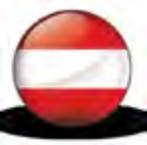
AUSTRIA
NIGHTJET – ÖBB TAKES OVER FORMER CITYNIGHTLINE NETWORK
From 11 December 2016, German Railways (DB) ceased operation of all classic overnight trains with sleeper and couchette coaches. This had been announced in advance, with DB citing forecast losses of €31 million on a turnover of €90 million annually (losses equating to 34% of turnover). Many of the former DB operated overnight sleeper routes have been taken over by Austrian national operator ÖBB, which is rebranding them as ‘Nightjet’. ÖBB has bought 57 sleeper and other vehicles from DB and is planning to order new rolling stock, including both couchette and sleeper coaches, for introduction around 2020.
The new ÖBB operated Nightjet network comprises the following main routes, some of which were already ÖBB operated before December:
■ Düsseldorf / Hamburg – Innsbruck / Vienna;
■ Hamburg – Zürich via Berlin and Frankfurt;
■ Vienna / Munich – Rome / Milan / Livorno;
■ Vienna – Zürich; n Graz – Zürich;
■ Vienna – Venice; and n Vienna – Bregenz
Motorrail facilities are available on some of these trains – between Hamburg / Düsseldorf and Vienna / Innsbruck, between Vienna and Livorno / Verona in Italy, plus domestically in Austria from Vienna / Graz to Feldkirch. The Nightjet trains all operate as Euro Night (EN) services.
In addition to operating its own Nightjet services, ÖBB continues to work with other operators maintaining overnight services linking Vienna with Warsaw, Kosice (Slovakia) and Prague. It has also maintained some of the services from Munich to Zagreb / Rijeka in Croatia and Budapest, and has introduced a new Zürich to Prague overnight route via Linz and České Budějovice in co-operation with Czech and Swiss national operators.
MORE VIABLE THAN THEY SEEMED?
In late December, German newspaper the Stuttgarter Zeitung revealed internal DB documents that showed increased profitability for the DB-operated overnight trains in the last few months prior to the withdrawal of the services. DB had forecast losses of €31 million on a turnover of €90 million in 2016 and used this as its justification for removing the services. The leaked figures from DB’s confidential monthly ‘Night Train Monitor’ (Nachtzugmonitoring) showed that by the end of September profitability for the year had improved by €5.9 million above forecast and losses were much lower at €13.5 million on turnover of €69 million (so losses representing 19% of turnover).
The leaked DB figures also reveal that all international routes were significantly improving profitability; these included the now partly withdrawn Amsterdam / Hamburg – Zürich / Munich CityNightLine and Köln – Warsaw / Prague Euro Night routes. However, by contrast, the domestic Hamburg – Lörrach / München motorrail service, withdrawn by DB in autumn 2016 and to be operated on an open access seasonal basis by BTE between Hamburg and Lörrach during 2017, increased its losses by €600,000 to €2.9 million. Since December, DB has been running some domestic German overnight Intercity or ICE high speed trains offering only seated accommodation.
TALENT 3 ORDER FOR ÖBB CONFIRMED
In January, Austrian national rail operator ÖBB signed a framework contract with Bombardier for up to 300 new Talent 3 EMUs to operate commuter and regional rail services. The overall contract could be worth up to €1.8 billion, and the first order for 21 trains to be used in the western Vorarlberg region of Austria and for cross-border services to towns in neighbouring Switzerland and Germany is valued at €150 million. During 2016 ÖBB and the regional government in Vorarlberg signed agreements for investment and support for services in the region for the period to 2021. The agreement will see service frequencies increased and payments to ÖBB from Vorarlberg to operate services in the region rising from €9 million for 2.84 million train kilometres in 2016 to €13 million and 3.18 million train kilometres in 2021.
The Talent 3 contract was awarded in September 2016 but then held up by legal disputes as unsuccessful bidder Stadler challenged the decision in court. Bombardier’s new 160km/h Talent 3 EMU is an improved version of its earlier Talent and Talent 2 models, over 1,400 of which are in service as both diesel and electric versions, mainly in Germany and central Europe. The first ÖBB Talent 3 trains will be assembled at Bombardier’s Hennigsdorf plant north of Berlin, although it is planned that production will move to Austria for later orders. The long term future of the Hennigsdorf plant as a manufacturing centre is in doubt, as Bombardier presented plans in December to the factory’s works council which would result in development and testing work being retained at the site with manufacturing moved to other sites in Germany and China.
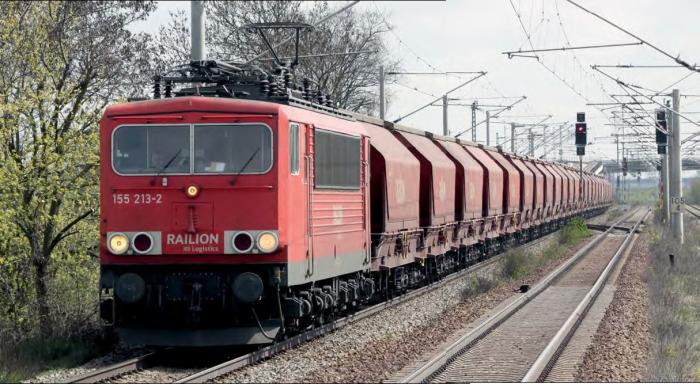
Bombardier is conducting a trial in Germany which will see a Talent 3 EMU equipped with the ‘Primove’ battery system enabling operation on non-electrified lines. This trial, funded by a €4 million grant from the German government, is being carried out with German regional operator SWEG and the Technical University of Berlin.
ÖBB ORDERS MORE DESIRO ML TOO
In late December ÖBB ordered a further 64 Class 4746 Desiro ML EMUs from Siemens to replace older Class 4020 EMUs used for Vienna S-Bahn services. When deliveries are completed in 2019, Siemens will have delivered 156 Desiro ML trains under the framework contract agreed in 2010 for up to 200 EMUs. The remaining option for another 44 trains is unlikely to be used, as ÖBB has now decided that future orders will be for the new Bombardier Talent 3 design (as described above).
ÖBB started operation of the regional version of the Cityjet Desiro ML (Class 4744) on services crossing just over the border into the Czech Republic in mid-December 2016, operating services from Vienna’s Franz Josef Bahnhof to České Velenice, replacing loco-operated push-pull services.
Since September 2016, the small batch of regional Class 4744.5 Desiro ML EMUs ordered by western Hungarian operator GySEV have been in use operating services between Vienna and Deutschkreutz / Pamhagen. GySEV brands these trains as ‘ventus’; the brand name is understood to be derived from the Latin word for wind.

FRANCE
ALSTOM AND BOMBARDIER SHARE MASSIVE PARIS RER ORDER
SNCF has selected an Alstom-Bombardier consortium to supply 255 new trains for lines D and E of the Paris RER / Île-de-France network in a framework contract worth around €3.75 billion. The first firm order, worth €1.16 billion and entirely funded by Île-de-France transport authority STIF, is for 71 trains formed as 15 ‘long’ 130-metre-long trains and 56 slightly shorter 112-metre-long units. Eventually, 130 trains for RER line D and 125 for RER line E services are planned, replacing older trains on line D and enabling expansion of line E (in the process replacing older push-pull and EMU rolling stock).
Alstom and Bombardier will build the trains at their French factories, and the order is shared between them on a 70:30 basis, with Alstom having the bigger share. Bombardier will build the double-deck intermediate coaches at its Crespin plant. The new trains will be delivered from 2021, in time for extension of RER line E services west from Haussmann St Lazare to Nanterre in 2022 via 8km of tunnels which are currently being built via the La Défense business district at a cost of €3.8 billion. From 2024 the new trains will be used to extend RER line E services as far west as Mantes-la-Jolie, extending the length of the line from the current 56km to 111km. When complete, STIF hopes the new line E, with its connection to La Défense, will relieve RER line A by around 15% on the section between La Défense and Auber, where it is already operating at saturation during peak hours.
The trains are described by Alstom as ‘boa trains’ because they are entirely open with no separation between vehicles, and feature extra wide sliding doors specifically to deal with the high passenger numbers found in central Paris. SNCF figures show that 70% of all SNCF customers are carried on services in Paris / Île-de-France, which represents just 2.2% of French land area!
Alstom classifies the new design as Xtrapolis Cityduplex – the company has sold its Xtrapolis range around the world, but until now never as a double-deck train. Each of the new RER trains has single-deck driving vehicles at each end (equipped with limited seating), with double-deck intermediate vehicles. The trains are not articulated, as they are designed to be able to carry heavy crush loadings on the busy central sections of both RER lines D and E through central Paris; the 130-metre length EMUs are designed to carry 1,861 passengers. Alstom say the new trains will be 20-25% more energy efficient than existing designs; each 130-metre train will have eight motor bogies.
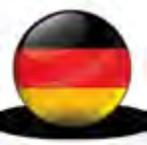
GERMANY
RAILPOOL AND TOSHIBA TO BUY 200 LOCOS FROM DB CARGO
DB Cargo has announced it has agreed the sale of 200 older six-axle 15kV AC electric locos to a new consortium led by leasing firm Railpool and including Japanese manufacturer Toshiba. The new loco pool will be used in future both by DB Cargo and other competing operators.
The fleets concerned are Class 151 locos built for West German Railways (Deutsche Bundesbahn) between 1972 and 1978 by several manufacturers and now all based in Nuremberg, plus the East German equivalent Class 155 locos built for Deutsche Reichsbahn by LEW at Hennigsdorf between 1977 and 1984 and now all based at Seddin near Potsdam. The value of the transaction has not been disclosed, although press reports during 2016 suggested it would be around €70 million.
DB said in its press release that creating the new privately owned asset pool of its older locos will give DB Cargo ‘the chance to lease locomotive capacities efficiently in line with changing demand’. DB will remain responsible for maintenance of the locomotives. DB Cargo is also understood to be evaluating sale and leaseback arrangements for its fleet of over 70,000 freight wagons.
TOSHIBA TO SUPPLY 100 HYBRID LOCOS
Separately, DB Cargo and Toshiba have agreed a contract to buy 100 hybrid locos to be built in Germany, assuming feasibility and prototype studies are successful. DB told Modern Railways that the new locos will be four-axle designs with a power output of around 800kW, designed for trip working and lighter-weight freight trains. Their use is expected to result in a significant reduction in diesel fuel consumption and lower maintenance costs, raising the average fleet availability. The first prototypes should be available in 2019. Toshiba is understood, based upon local media reports, to be looking for a manufacturing location for hybrid locos in Northern Germany, with Kiel and Rostock as possible locations.
Toshiba and DB launched plans to rebuild older Class 294/295 locos using battery technology at InnoTrans in September 2016 (p78, November issue). DB is clearly trying to widen its supplier base beyond the EU – an oft stated aim of the company for some years. In the DB Cargo press release, Jürgen Wilder, chairman of the management board of DB Cargo, said: ‘The objective [of the project] is to promote the development of the supplier market for freight locomotives and components in co-operation with Toshiba’, adding ‘This will provide DB Cargo with access to sunrise technologies that are not currently available in this form in our home market. In return, we – as the largest rail freight operator in Europe – can pave the way for Toshiba to enter the European market.
DB is clearly not content with the current offers from established European suppliers, adding in the press release: ‘The pace of innovations in the rail freight business is slowing down and competition is low as many European manufacturers have discontinued their activities in this sector’ and that ‘DB Cargo seeks to overcome these obstacles in a collaboration with Toshiba and make the European market for rail vehicle technology a more attractive proposition for the leading Asian technological players in the future’.

IRELAND
MALAHIDE DART STATION TWINNED WITH HANDFORTH STATION
In late November Malahide Dublin Area Rapid Transit (DART) station was twinned with Handforth station in Cheshire. The initiative came from the Friends of Handforth Station, the DART management team and the tidy towns committee in Malahide following a meeting held in Malahide. Friends of Handforth Station has just celebrated its 20th anniversary.
The launch in Handforth was attended by representatives of Northern Rail and Iarnród Éireann (IÉ). Bespoke station signage will be displayed at both Malahide and Handforth stations, and that at Handforth will include the Gaelic spelling of Malahide (‘Mullach Íde’). Both stations are served by double track electrified lines. There are plans for members of the Malahide tidy towns committee to travel to Handforth with IÉ representatives to further develop the twinning process in the spring. This inaugural station twinning is proposed as the first of several. TimCasterton
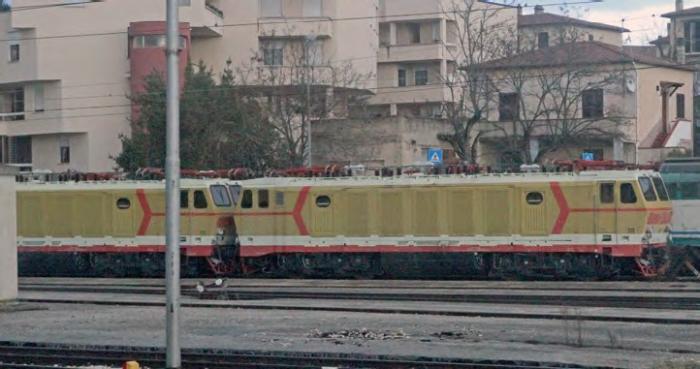

ITALY
SARDINIAN ELECTRIC LOCOS FOR SCRAP – NEVER USED
Wasted resource: in 1983-86 Italian Railways (FS) bought 19 Class 491 and six Class 492 electric locos for use on the soon to be electrified 25kV AC network on the island of Sardinia. The electrification was later cancelled and the locos, built by a consortium including Ansaldo and Fiat but unable to work on the 3kV DC mainland system in Italy, were stored. One was later used for ETCS testing on the Italian 25kV AC high speed network, but various attempts to sell them abroad failed and in 2016 the process of removing them from storage at Foligno in central Italy and scrapping them began; one is likely to be preserved! Two of the locos are seen in store at Foligno on 8 March 2016. Keith Fender
STORED 201 CLASS LOCO BEING REBUILT
201 Class locomotive No 230, formerly used on the cross-border ‘Enterprise’ services, caught fire at Goraghwood (near Newry) following an alternator bearing failure on 6 June 2013 whilst working the 18.05 Belfast Central to Dublin Connolly service. Rebuilding of the stored loco has now commenced, with the intention that it will become one of the prototype ‘test bed’ locos for a new, more economical ‘multi-engined’ power unit (p81, July 2016 issue). IÉ has completed prequalification for the re-engineering of the 201 Class, and it is proposed that the tender for the work will be issued in January 2017.
Many of the 201 Class locos stored in recent years may be returned to service. They were stored due to the introduction of the Intercity DMUs (replacing loco-hauled services on all routes except Dublin to Cork and Belfast) plus a downturn in freight, which has since reversed – freight traffic has increased year-on-year for around four years. A requirement for additional capacity on the Dublin – Cork route just before Christmas on 23 December resulted in seven Mk 4 push-pull sets being required for the first time in four years (normally only six are used). Tim Casterton

POLAND
STADLER AND SOLARIS FORM JOINT COMPANY IN POLAND
Swiss rail manufacturer Stadler and Polish light rail and bus manufacturer Solaris have created a 50:50 joint venture in Poland. The new jointly owned light rail manufacturing company, called Solaris Tram Sp.z.o.o, started operation on 1 January 2017 and has taken over ownership of the existing Solaris light rail production plant in Sroda, south east of Poznan in western Poland. Under the new arrangements the jointly owned Sroda plant will build bodyshells and paint them; expansion of the plant is planned to double production output. Final assembly will be undertaken either at other Solaris factories in Wielkopolska (Greater Poland) province in western Poland or at the Stadler rail vehicle assembly factory in Siedlce, south east of Warsaw, where Stadler has built over 320 trains – and currently claims to be Poland’s biggest rail export manufacturer.
Stadler and Solaris had previously announced in September that they would be bidding together for light rail contracts in Poland, and have already submitted joint offers in recent tenders in both Kraków and Poznan. In future, the new jointly owned Solaris Tram will bid together with Stadler’s Polish subsidiary Stadler Polska as a consortium led by Stadler for potential orders in Poland and central/eastern Europe. The value of the transaction, which effectively means Stadler has taken over half of the existing Solaris Tram production business, has not been disclosed.
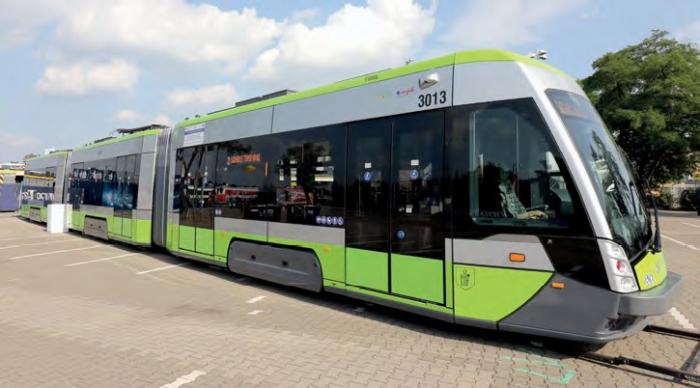
Solaris was established in 1996 as a bus and trolleybus manufacturer and has built over 14,000 such vehicles. The company entered the light rail market in 2009, initially winning contracts supplying its Tramino design vehicles to Poznan. In more recent years the Tramino has been exported to Germany, with operators in Jena, Braunschweig and Leipzig buying them, although quality problems delayed the introduction of the Braunschweig vehicles. Stadler currently builds its light rail products elsewhere: Variobahn and Tango trams are built in Germany and Switzerland, and the company has recently started building its new Metelica tram in Minsk, Belarus.
The new deal – effectively giving Stadler another lower cost manufacturing plant within the EU – comes at a time when the company is experiencing growth in orders (for example from new markets such as the UK) and through acquisition. In discussion with the Swiss media in early 2017, Stadler’s owner Peter Spuhler (who owns around 85% of the company, the rest being owned by employees) raised the idea of a stock market flotation for around half the shares he currently owns. No detail of when this might occur has yet been released.

SPAIN
AVRIL FOR RENFE
In late November 2016, Spanish manufacturer Talgo finally won a long running tender to supply new 330km/h 1,435mm gauge high speed trains to Spanish operator RENFE. Talgo will supply 15 of its new ‘Avril’ high speed trains, the first order for the design which was first launched in 2014. The new trains, which are powered by a power car at each end, should be ready for use in mid-2020; taking full advantage of the trains’ wide car bodies, they will have 3+2 seating in second class and 2+2 seating in first class, with each train offering 416 second class and 105 first class seats.
The bidding process, which resulted in five firm offers from Talgo, CAF, Alstom, Bombardier and Siemens, was delayed several times by a mixture of political uncertainty and by a legal challenge, ultimately upheld by the courts, from Bombardier objecting to the requirement for significant production in Spain. Ultimately Talgo prevailed with an offer worth €786.5 million, which was 28% lower than the initial offers. The contract includes maintenance for 30 years, with the option for a 10-year extension and for a further 15 trains.
